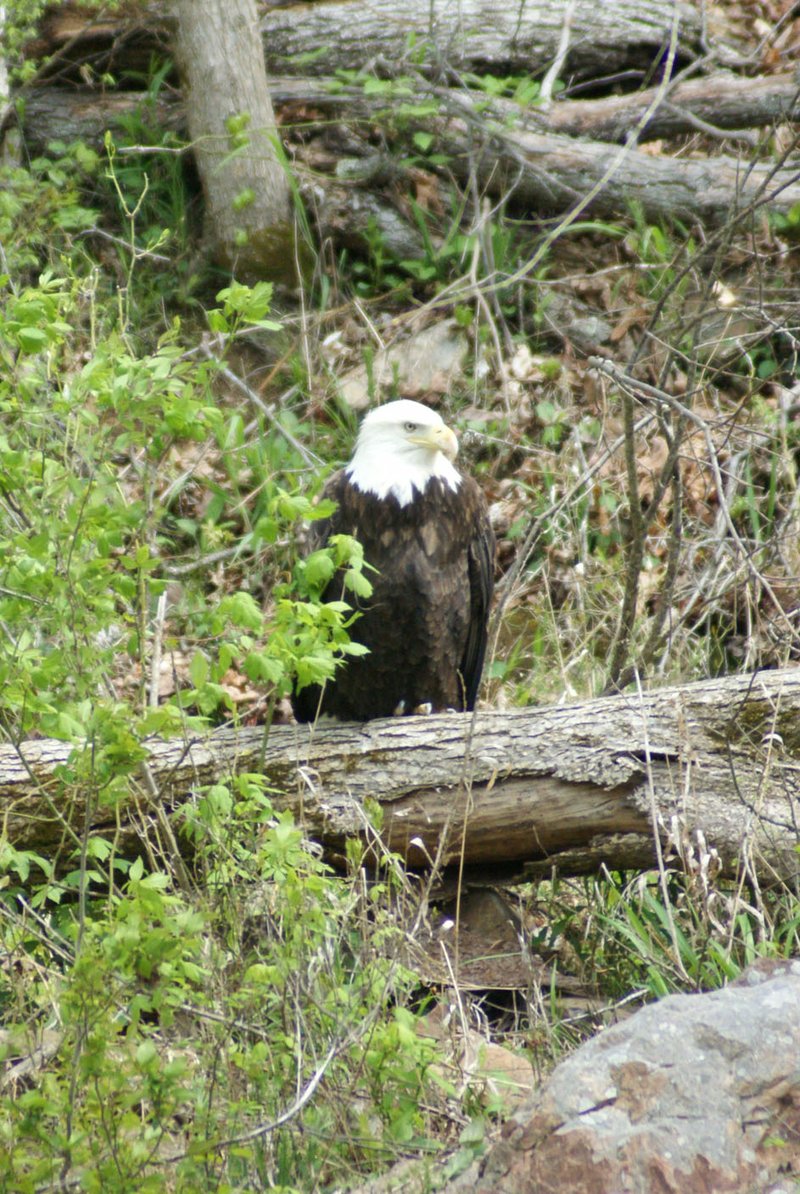The latest bald eagle patient at Morning Star Wildlife Rehabilitation Center is out of the woods, but it's still really sick.
A dramatic rescue of an ailing bald eagle along the Kings River took place April 19 upstream from the Rockhouse access. Capturing a wild raptor that doesn't want to be caught is no easy task, but the effort was a success. The eagle is now being treated by Lynn Sciumbato at her wildlife rehab hospital near Gravette.
She's "99% sure" the adult bald eagle has lead poisoning, Sciumbato said last week. A blood sample has been sent to a lab for tests and the results aren't back yet, she said. Sciumbato is federally licensed to care for bald eagles, which is required.
It isn't known yet whether the eagle can be released someday or even if it will survive. Test results will tell how severe the lead poisoning is, if that's the culprit.
"What concerns me most is that it isn't eating on its own," she said. The eagle is being kept in a crate for now. Sciumbato leaves the occasional dead rodent in the crate for the eagle to eat, but the bird won't touch it. It's being fed a liquid diet through a tube in its stomach, and Sciumbato force feeds cut up mice to the eagle through its mouth.
He is a fully mature adult bald eagle, sporting the white head and white tail feathers bald eagles develop at around age 5. Sciumbato doesn't know the gender. It weighed nine pounds when it was caught. At that weight, it could be male or female, she said. Male and female bald eagles look alike, except for their size. Female bald eagles are larger than males.
Here's how the rescue unfolded.
David Thrasher of Rogers first saw the bald eagle along the Kings River on April 12. It wouldn't fly and was obviously ill, at rest in some woods along the shore. Two Arkansas Game and Fish Commission wildlife officers tried to catch the sick eagle the next day, but couldn't. The bird couldn't fly but it could run.
A rescue was going to take a squadron of volunteers to surround the eagle so it could be caught, Thrasher said. He went back to the river on April 16 to make sure the eagle was still there. Sure enough, it was.
He recruited 10 volunteers to mount the rescue operation on April 19. Off to the river they all went, with canoes and a raft in tow. Sciumbato was along with the group to help catch the eagle. An advantage was they had permission to drive through some private land and get close to the eagle, which was still there on the other side of the river.
Some of the group hiked through the briers to get above the eagle. Eventually the rescuers surrounded it in the rough terrain near the river, Thrasher said.
The crew got the eagle secured in a net, and Sciumbato grabbed its legs. That is, after pulling on heavy protective gloves that go all the way to her shoulders. An eagle's sharp talons could do some major damage without those gloves, which are made for such work.
She got the eagle in a crate and drove it to her rehab center, where it is today.
The Kings River eagle makes five bald eagles Sciumbato is caring for at Morning Star. That's the most bald eagle patients she's ever had at one time. One way eagles ingest lead is by scavenging on the carcasses of deer or small game that have been shot with lead ammunition. Lead shot for waterfowl hunting was banned nationwide in 1986. Duck and goose hunters now use steel or other nontoxic shot.
Some in the rescue group named the Kings River eagle "Bubba," Sciumbato noted, though it could be a "Bub-ette."
Flip Putthoff can be reached at fputthoff@nwadg.com.
Sports on 05/07/2019
